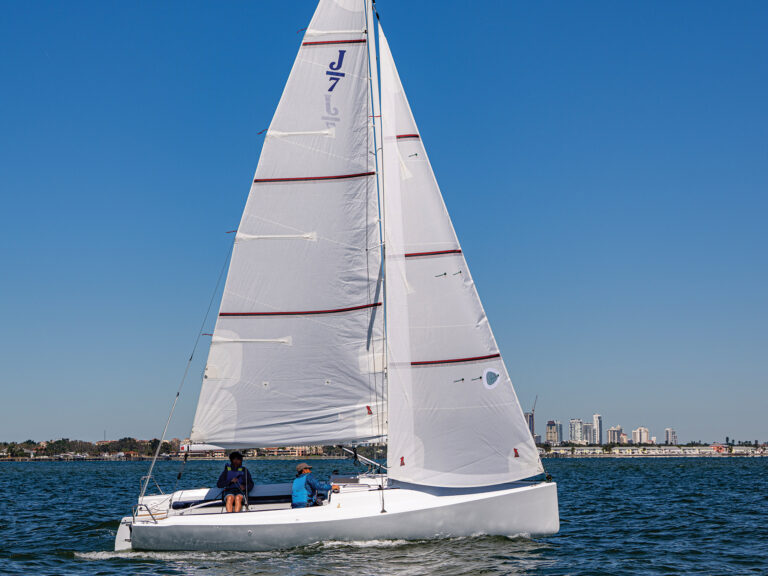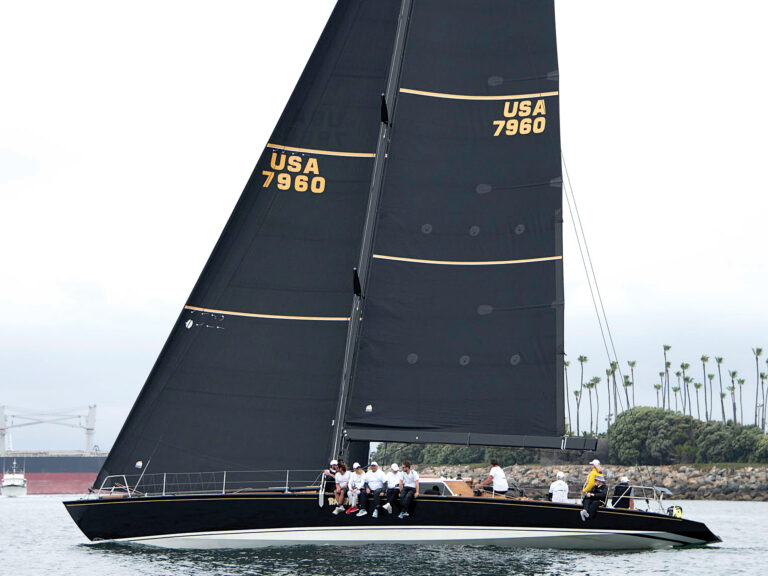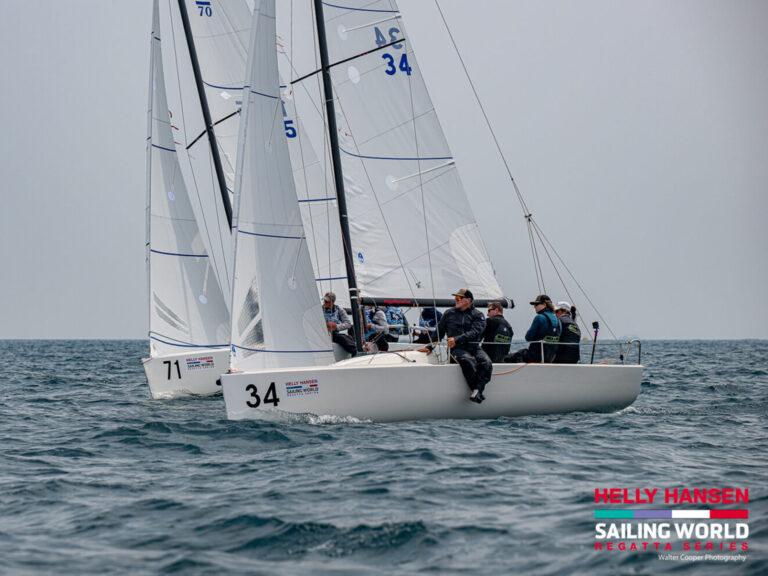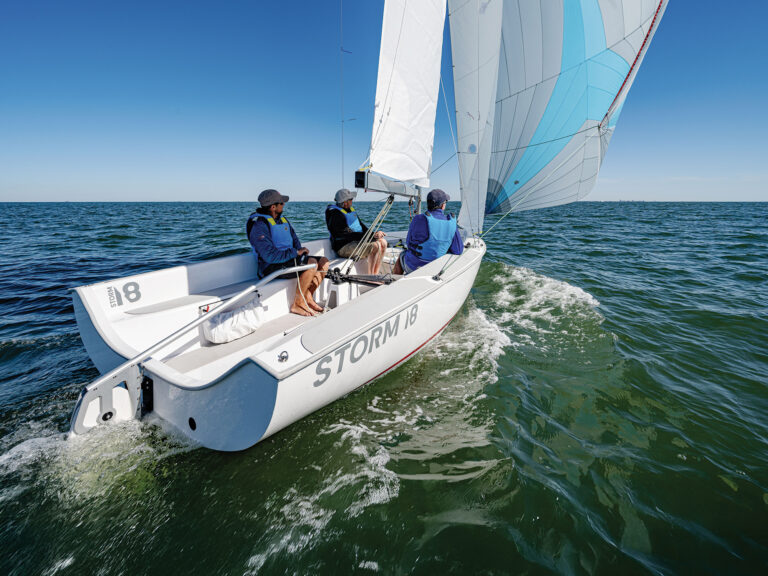
Key West 07 Sunday
Take a stroll down Duval Street, or one of the other bar-lined drags in Key West and it’s easy to think that few things ever change in this carefree town at the end of the Florida Keys. The banter between the crowd and the acoustic guitar-playing troubadour on stage at Irish Kevin’s sounds just like it did during my last trip in 2005. The floor at Sloppy Joe’s still makes you look down to ensure you’re not wearing your good shoes. The myriad T-shirt and knick-knack shops hawking Key West shorts and shirts with funny, if crude, sayings, look just like they do every year (and in fact at virtually every sea-side tourist town). The roosters still wander the sandy side streets as if they own them. But like any other town in the United States, Key West is a constantly changing community. On the way from the airport to our team house, my cab driver told me that the biggest change on the island is a recent condominium boom, which has siphoned off 1,500 rentable beds from the island’s vital hospitality industry. B&Bs and small motels have been bought, improved, and portioned off to people looking for their own slice of this funky paradise (thought not everyone uses that term). A significant change that hides easily behind the expect neon and bustle of the active social scene and the aquamarine water. The annual sailing extravaganza known as Acura Key West Race Week can look quite similar year to year. The premier one-design classes show up every January in large numbers: the Farr 40s, the Mumm 30s, J/105s, and the Melges 24s. There’s always a solid group of handicap racers. Some sailors will take it seriously and hit the rack before midnight. For others, the action doesn’t really start until after the sun goes down and the tent gets swinging. But look a little more deeply and, like the town, you’ll find plenty of reasons why the 2007 edition regatta will be completely different from last year. Farr 40s Get Supersized The Farr 40 division is, as it has been for nearly a decade, one of the most competitive classes at Key West. The 17 boats registered is a lower number than previous years, but the class will be sailing its first regatta with masthead spinnakers and oversized poles. At least one skipper expects the new kites to further mix up the results in this already competitive class. “It’s definitely going to make a difference,” says Rod Jabin, the owner/driver of the Annapolis-based Ramrod. “It’s a whole different boat with a masthead kite and we’re all going through a steep learning curve. It’s much more physical for everybody, so the timing and the rate of turns, the takedowns, the sets are a whole different set up. It’s really a big challenge for everybody to overcome.” Jabin’s tactician Scott Nixon says he expects the difficulty of handling the larger sail to provide more opportunities for the less-polished teams. “I think it’s going to close things up,” Nixon says. “The way we saw things [during Saturday’s practice], it looks like there’s going to be some passing downwind. Before, everyone’s boathandling was pretty solid and they had the frac kites figured out. The boathandling game changes things and there’s going to be a lot more passing at the leeward marks and the sets as well.” Nonetheless, the money’s still got to be on the established teams to rise to the top by the end of the week. Among the favorites are Jim Richardson’s Barking Mad, with Vince Brun calling the shots, the Italian Nerone and Mascalzone Latino teams, Steve and Fred Howe’s Warpath, and Eric Maris’ Twins, which will be looking to translate a win in the 2006 Mumm 30 World Championships in Miami in November to the 40-footer. 20 Reasons the 32 Has a Good Future With the new spinnaker, and the close racing, the Farr 40s will attract plenty of photos boats. However, the 10-year-old class could get upstaged on its own circle by the surging Melges 32s. With 20 boats on the line, and blistering downwind speed in breeze, the 32 is quickly picking up a lot of momentum. “I think it’s awesome,” says veteran sailmaker Steve Benjamin, who’s calling tactics on Simon William’s Fresh Guidance. “It’s a lot to do with how exciting the boat is to sail. Upwind it’s an overpowered, big dinghy-type of thing, but downwind it really lights up. It’s spectacular.” William’s team, which is coming to the Melges 32 from a Farr 40 and an Etchells, has put in three days total on their boat. They know they’ve got a lot to learn. “We’ve been trying to do as much tuning the past few days as we could. We tuned with [with class veterans Mike Carroll’s New Wave and Jeff Ecklund’s Star] yesterday and today. And then today we ran a whole bunch of short course races. I don’t know what Simon’s goal is, but if we get into the top 5 we’ll be feeling OK about things.” Handicapping the New Arrivals in IRC One-designs once again comprise the majority of the 260-odd boats at 2007 Acura Key West Race Week, with the 49-boat Melges 24 fleet and the 33-boat J/105 class leading the way. But IRC has three very competitive groupings in 2007 and there are 6 PHRF divisions, the latter racing for the title of PHRF National Champion. The IRC fleets will generate interest due a handful of new boats. In IRC 3, Makoto Uematsu’s Club Swan 42 Esmeralda will make the competitive debut for this hotly anticipated one-design-over 30 are already on order. The boat, with its custom-green paint job, will be fully stocked with pro sailors, so it won’t be sailing in class trim-only two Category 3s are permitted under class rules and neither can be paid to sail. But owners and non-owners alike will be nervously anticipating the boat’s first battle under IRC, a rule to which it was designed. In IRC 2, Michael Brennan’s Sjambok will be the new boat to watch as it goes to battle in an 8-boat class that includes 4 TP 52s, and a canting keel Cookson 50. Brennan raced his boat for the first time in the Key West Race on Wednesday, finishing second under IRC. “It’s brand new,” says Brennan, who previously owned a 1D48 and a TP 52. “The boat arrived on the ship on the 17th of December. We had an opportunity to put her together, we did the feeder race down here, which is the first time we really had the race sails up in earnest. We’re still tweaking the boat; it’s brand new. We’re getting there, we’re sort of honing in on it.” The 45-foot Reichel/Pugh design has many of the attributes of the TP 52, however, it was built with a bow sprit rather than a spinnaker pole. “It’s an apparent wind boat,” says Brennan. “On the 52, the pole was never more than 2 feet off the headstay anyway. So this is not really that different. It’s about hitting the angles and keeping the apparent working. The faster the boat goes, the more you can push it down, it’s just that simple. You’re really shooting yourself in the foot as soon as you try and soak the boat.” During the Key West Race, Sjambok hit a top speed of 28.7 knots, an impressive debut. However, Brennan knows that straight-line speed in a distance race doesn’t mean the boat will win around the buoys. “Michael’s design brief on the boat was not to optimize it, or slow the boat down, for IRC,” says tactician Paul Eldrid of Quantum Sails in Perth, Western Australia. “The boat is going to have its weaknesses as well as its strengths. It’s very important for us to stay in touch with our opponents upwind because downwind the boat does have a particular strength and that’s the time for us to capitalize. The boat can sail above it’s rating downwind and it can do that easily. Upwind we’re going to have to work particularly hard to keep in touch with our opponents.” A quartet of 4 Swan 601s make up half of IRC 1. As the slowest boats in a group that includes the 81-foot Bon Bon and the 66-foot Bella Mente, the 601s will have to be careful not to get caught battling amongst each other too much. That said, you can be sure that Russell Coutts, the tactician on Torbjorn Tornqvist’s Artemis, will be looking to avenge the loss to Jim Swartz’ Moneypenny, and tactician Dee Smith, in the last race of the Swan Cup last September. As for this editor? I’ll be helping the Mumm 30 Turbo Duck around the course. We’ve got a 10-boat fleet, a little disappointing considering that more than two dozen were in Miami in November for the worlds. But with Peter de Ridder’s Mean Machine and Nelson Stephenson’s TeamBold in the group, winning won’t be easy and we’re looking forward to the challenge. Then again, that’s the one thing that never changes about Key West. No matter the design, rating systems, or size of the fleet, winning is always a challenge, always a worthy goal for a midwinter trip to the southern end of U.S. Highway 1.









